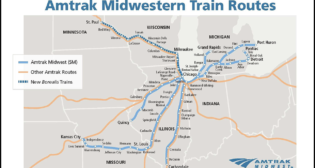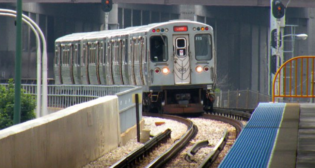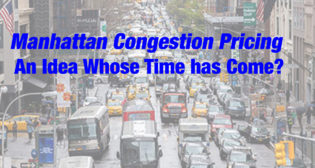
21st century growth spurt for New York’s subways
Written by Douglas John BowenOngoing fiscal distress continues to roil New York's subway operations, but system expansion literally is on a full bore. What does North America's largest rapid transit property do for an encore? Get larger. After two decades of stagnation, New York City's famed (and oft-maligned) subway system is adding underground mileage again.
The percentage gain is modest by world standards—only about 3.5 miles being added to a system conservatively rated at 660 passenger route-miles. But the anticipated ridership gains, particularly for the oft-delayed Second Avenue Subway, continue to set a pace other cities worldwide might envy.
The two route expansions, both in Manhattan, are clearly expansion projects mixed with numerous rehabilitation and upgrades totaling close to $15 billion in capital construction (RA, December 2007, p. 39). That makes them significant, especially politically, as the New York Metropolitan Transportation Authority has gained ground on returning the existing network to a state of good repair.
Expansion also sends a signal, both to locals and to economic interests outside New York, that the city will continue investing in its infrastructure despite current economic woes, including substantial fiscal shortfalls in MTA’s operating budget. MTA says the city expects to add 1.5 million people within the next 10 to 15 years, making rail rapid transit even more critical to New York’s future economic health.
Second Avenue Subway: Reality at last?
After numerous false starts throughout the 20th century, resulting in local iconic status (the line that never existed), the long-awaited Second Avenue Subway is taking shape at last. Tunneling began in May for Phase One, running from 96th Street to 63rd Street (under Third Avenue), tying in with the existing system. New stations will appear under Second Avenue at 96th, 86th, and 72nd Streets, and new entrances to the existing Lexington Av/63rd Street Station will be built at 63rd Street and Third Avenue.
Phase One subway service alone is projected to carry more than 200,000 weekday riders, bolstering rail access on Manhattan’s East Side and possibly alleviating pressure on the East Side’s single existing line running under Lexington Avenue.
MTA New York City Transit will extend its existing Q service in Manhattan onto the Phase One portion to provide through service and transfers, the latter seen as a plus, not a negative, for many subway riders.
The price tag for Phase One’s two miles, once $3.8 billion, is a hefty $5 billion, justified by its backers, who cite projected ridership, economic development impetus to Second Avenue, and the starting point for the next three phases, which would grow the line to 8.5 miles, costing $16 billion. Phase One funding is largely in hand; Phase Two, extending the line north to Harlem, is considered likely to occur because portions of the line were in fact excavated, using cut-and-cover construction, and can be fairly easily linked together with Phase One. Funding for the portions south of 63rd Street, however, remain problematic at best.
Phase One, progressing though it is, has been dogged by setbacks of its own, forcing MTA to push the projected completion date, most recently, to 2016. The Federal Transit Administration, more pessimistically, estimates that the line may not open until 2018.
Unlike most of the existing lines underneath Manhattan, offering both express and local tracks, the Second Avenue Subway will be a two-track line.
City funding drives No. 7 extension
MTA is the managing agent—and, some point out, a reluctant partner—involved in the extension of the venerable No. 7 line west of Times Square to Manhattan’s “Far West Side” at 34th Street. More than the Second Avenue Subway, the No. 7 extension is justified for its economic development potential, specifically for 26 acres of potential building atop MTA Long Island Rail Road’s West Side Rail Yards. MTA has awarded a contract to the Related Companies for the $15 billion development, which is expected to help finance the 1.5-mile, $2.1 billion extension terminating at the site.
Tunneling here is nearly complete, stretching west from Times Square (7th Avenue) under 41st Street, then turning south and running under 11th Avenue to a 34th Street Station, with a tail track tunneled as far as 23rd Street for turnaround capability.
The underground effort hasn’t been easy; the extension has had to avoid various other tunnel infrastructure, including the Northeast Corridor approach to Penn Station, tunnels built by the New York Central Railroad, the Lincoln Tunnel, and the Port Authority Bus Terminal and its ramps. It could not avoid an abandoned lower-level platform at 42nd Street and Eighth Avenue; that platform was removed for the No. 7 extension, which traverses underneath the station’s existing, active platforms.
Barring unforeseen setbacks, the extension is expected to open in 2013. It will include a CBTC system from Thales (details, p. 8), which is being added to the existing No. 7 line. CBTC debuted on NYCT on the L line with a Siemens-supplied system (RA, April 2007, p. 23); the No. 7 installation will be the agency’s second. Also on tap as a first for New York’s subway system: platform-edge doors at the 34th Street Station, enhancing customer safety on the platforms while also enhancing station climate control and energy efficiency.
One setback already has been suffered, however—the deletion of a stop at 41st Street and 10th Avenue. Omitted as a budget-cutting measure last September, the missing station now is being belatedly championed by real estate interests as a serious omission, but it’s unclear if the station can be added back into the plans now that tunneling is essentially completed.
More customers expected
Critics of subway expansion, following tradition by citing existing shortfalls in operating support, have failed to stop construction. City officials have countered by touting the expansion efforts as the first such in four decades—an exaggeration, since the Archer Avenue Subway extension in Queens debuted in 1988, while the 63rd Street Tunnel (upper level) to Roosevelt Island and Queens opened in 1989. The lower level of the 63rd Street Tunnel, completed but unused, will be activated with completion of East Side Access, the $6.3 billion project allowing Long Island Rail Road riders to reach Grand Central Terminal, and Manhattan’s East Side business district, more directly.
MTA’s current target date for completion of ESA is 2016. Whenever it does open, East Side Access almost guarantees still more passengers for both the No. 7 line, particularly westbound, and the already overburdened 4, 5, and 6 services on the East Side, further bolstering the demand for a No. 7 extension and a Second Avenue line.



